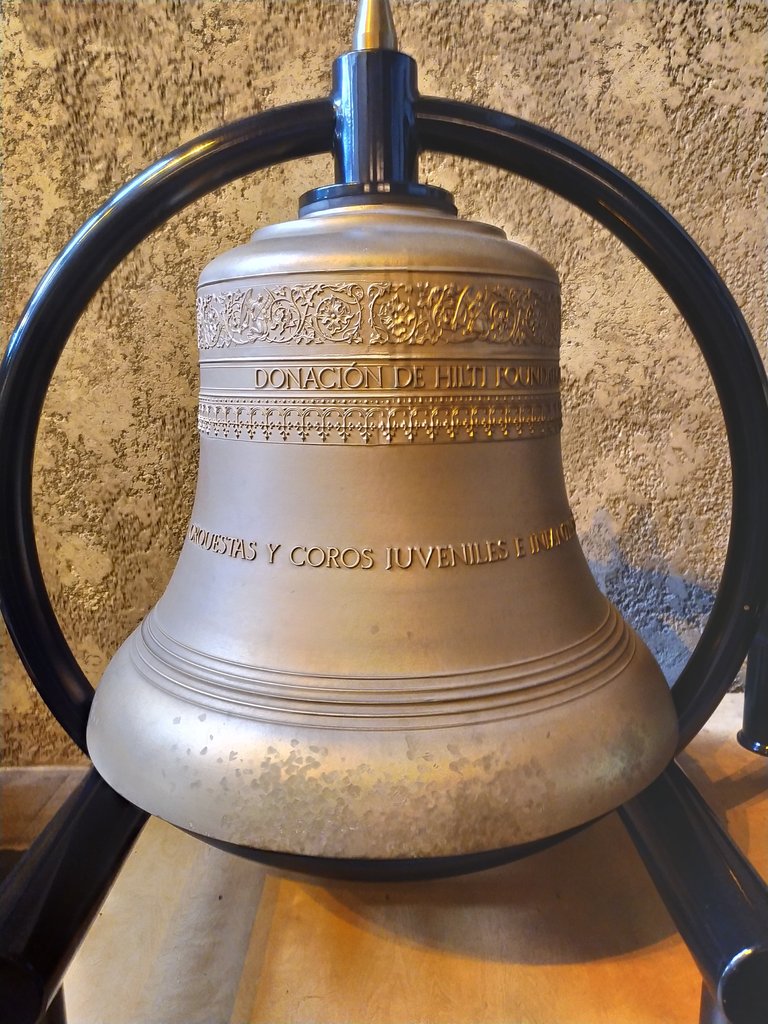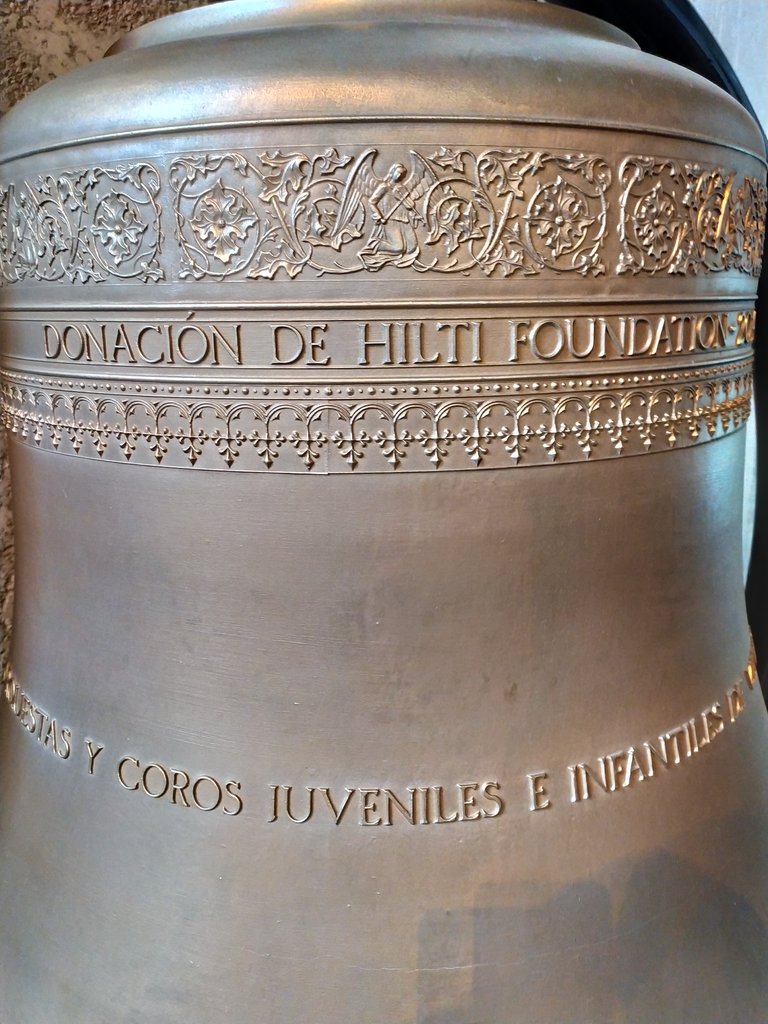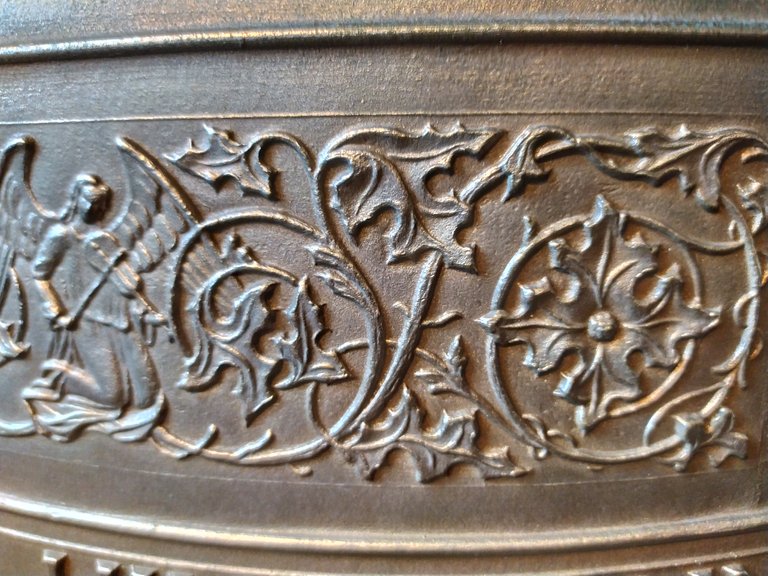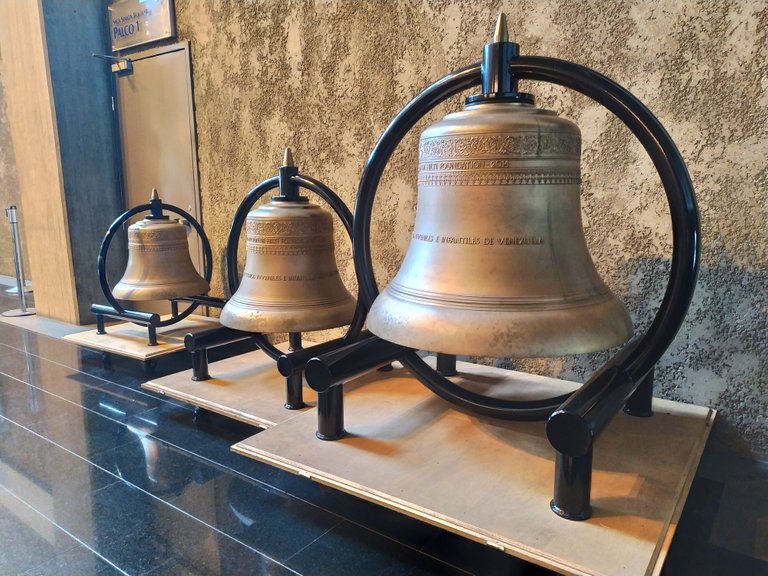Bells in the history
A few weeks ago, while I was accompanying @cvnuitter through the Simón Bolívar social action center, home of the Venezuelan symphony orchestra, I saw some beautiful bells used by the percussionists. They are 3 bells donated by the Hilti Foundation.

I know that many of us have seen the bells in different Catholic churches, especially those belonging to Europe and the American continent. Many may think that the bells are the creation of the church, if so we are mistaken. That is why I will talk a little about the most striking objects, personally I have always felt attracted by these objects that generate an incredible sound.
History
Its name has varied both in religion and for different social classes, kingdoms and cultures in general, the Romans called it tintinabula while the Christians signum, the reality is that the bells are not original from Europe but from Asia, In Japan and China there is a record of the manufacture of the first bells that were called Ghanta by the Chinese and suzu by the Japanese arriving in Europe through older trade routes between Asia and Europe, and immediately the Catholic Church, Russian Orthodox Churches, and some Lutheran churches adopt this sound instrument to adapt it according to the belief.

The fundamental principle of the bells that began to be called in this way according to records in the 7th century history books was to call the faithful to attend liturgical events. The material par excellence with which the bells have been built since that time is bronze, an alloy of copper and tin. Steel has also been used but its durability is average and this made it discarded by the construction houses.
Parts
The most common traditional form of the bell is an inverted cup and although it looks like a single body it has several other parts which I will explain below.

The yoke is the part to which the bell is attached and tied, usually made of extra hardened wood.
The handle is part of the bell and as its name indicates it is a handle as if it were a single cup that is used to tie the bell to the yoke.
Shoulder is the part that is fused with the handle, its purpose is to give strength to the bell.
Third is fused with the shoulder and is the beginning of the wide body that has acoustic properties.
Medium is the central part of the bell where sound is produced by means of blows.

Foot, the final part of the bell that gives the characteristic shape of an inverted cup.
Lip is the thick flange that against the middle position allows the bell not to be torn or broken.
Next to the lip is the edge where the thickness of the bell can be seen.
Badajo, is the bar that collides with both ends thanks to a movement that can be manual OR mechanical and more recent by computer.

Half a foot is a ring that holds the foot.
In the case of the bells used in symphonic orchestras as instruments these are not provided with clapper, so special rods are used to strike the bells, this style is more similar to how the Asians play it.
To read all about this project and find out how you can support it, visit it at Fundition.io by simply clicking on the link: Puppets in the community PROJECT and be sure to check out steemit's profile @arrozymangophoto
Thanks for reading
Special recognition:
@r2cornell
@mariusfebruary
You can also support this project with your delegation
https://mobile.twitter.com/IvanMontti/status/1228166999882158082
Congratulations, your post has been upvoted by @dsc-r2cornell, which is the curating account for @R2cornell's Discord Community.